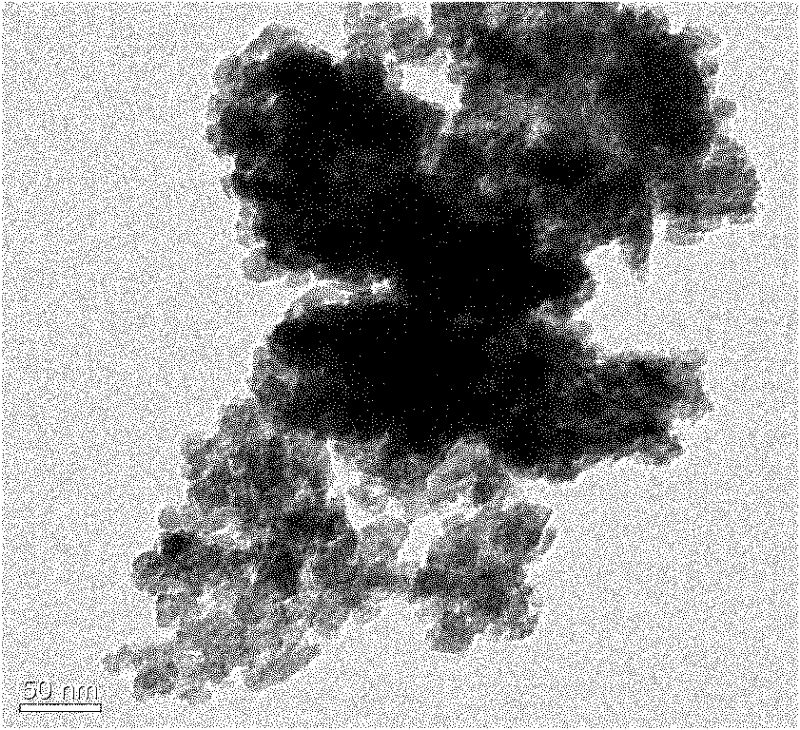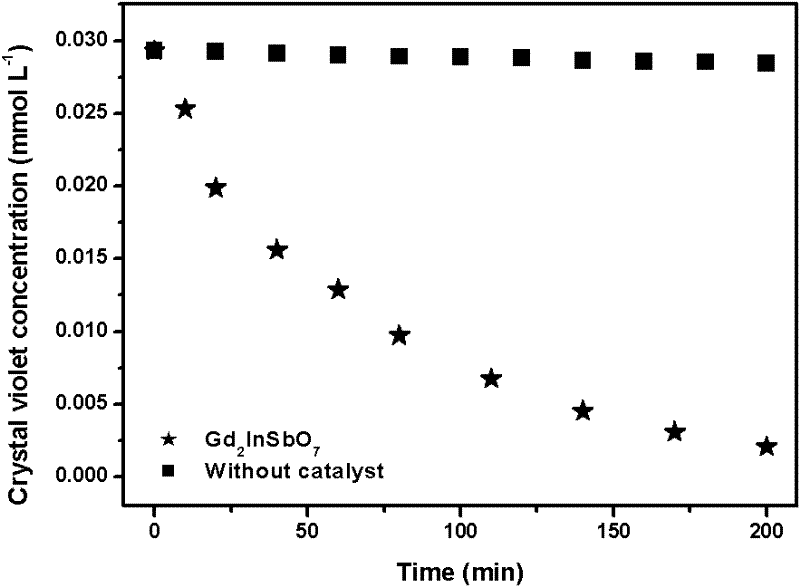Core-shell gadolinium indium antimony base composite magnetic-particle photochemical catalyst as well as preparation and application thereof
A magnetic particle and shell structure technology, applied in preparation and application, can solve the problems of low photocatalytic efficiency, low utilization rate of sunlight, high photocatalytic efficiency, etc.
- Summary
- Abstract
- Description
- Claims
- Application Information
AI Technical Summary
Problems solved by technology
Method used
Image
Examples
specific Embodiment approach
[0046] 1. Powder catalytic material Gd 3-x In x SbO 7 The preparation process route of (0.5≤x≤1) is as follows:
[0047] (1) Powder catalytic material Gd 3-x In x SbO 7 Preparation of (0.5≤x≤1): Gd is prepared by high temperature solid phase sintering 3-x In x SbO 7 (0.5≤x≤1) photocatalytic powder material; with the purity of 99.99% In 2 O 3 , Gd 2 O 3 and Sb 2 O 5 As raw materials, the In, Gd and Sb are divided into In, Gd and Sb in the atomic ratio of the molecular formula 2 O 3 , Gd 2 O 3 and Sb 2 O 5 Mix thoroughly, then grind in a ball mill until the particle size of the powder reaches 1.4-1.8 microns, dry at 200±40°C for 2±1 hours, press into tablets, and sinter in a high-temperature sintering furnace. Raise the furnace temperature to 750±20°C, keep the temperature for 8±2 hours, and then cool down with the furnace, take out the powder into tablets and pulverize to a particle size of 1.3-1.6 microns, then press these powders into tablets and put them i...
PUM
| Property | Measurement | Unit |
|---|---|---|
| particle diameter | aaaaa | aaaaa |
| particle diameter | aaaaa | aaaaa |
| diameter | aaaaa | aaaaa |
Abstract
Description
Claims
Application Information
 Login to View More
Login to View More - R&D
- Intellectual Property
- Life Sciences
- Materials
- Tech Scout
- Unparalleled Data Quality
- Higher Quality Content
- 60% Fewer Hallucinations
Browse by: Latest US Patents, China's latest patents, Technical Efficacy Thesaurus, Application Domain, Technology Topic, Popular Technical Reports.
© 2025 PatSnap. All rights reserved.Legal|Privacy policy|Modern Slavery Act Transparency Statement|Sitemap|About US| Contact US: help@patsnap.com



